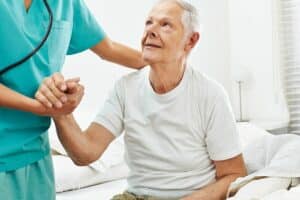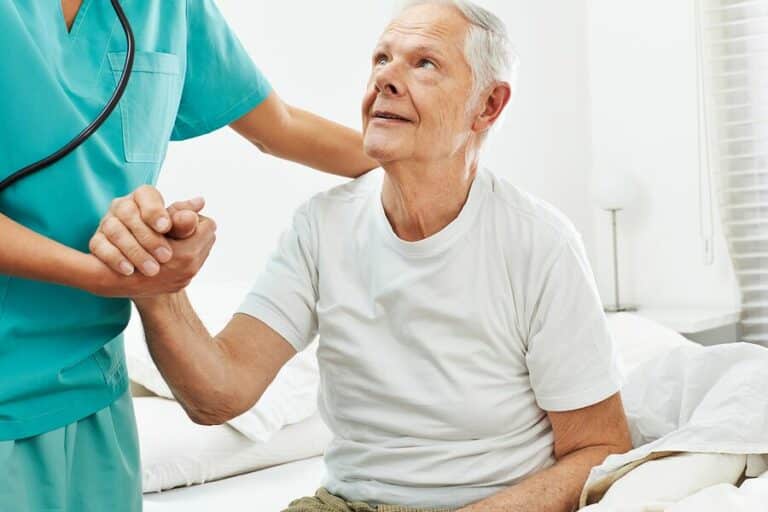When people who are near the end of life enter what is called the active dying phase, certain characteristics and symptoms become more obvious. It can be easier to face what’s coming when families understand what to expect during this period. End of life care providers can offer solutions and help that make the active dying phase easier to cope with when the time comes.
Reduced Appetite and Intake
As patients enter the active dying stage, they’re less likely to want to eat or drink fluids. This can be upsetting for families because they know that their family members need food and water to survive. But the patient’s body is in the process of shutting down and a reduced appetite is an indication that the body needs less and less energy.
Increased Fatigue
Families may start to notice as well that people near the end of life find that it’s much more difficult to stay awake as much as they might want to. Increased fatigue causes a withdrawal from activities and interactions, too, reducing social engagement. People near the end of life may be confused or have shorter periods of lucidity, especially if they’re also dealing with cognitive illnesses. These responses are normal because the body is conserving energy and spending the energy it has on essential functions only.
Physical Changes
There are lots of physical changes related to active dying. The patient’s breathing patterns may start to change, and they are likely to experience dramatic temperature fluctuations, feeling cold and then too warm. Skin color may also change. End of life care professionals can help to explain these changes and help the patient to remain comfortable.
Emotional Changes
People near the end of life might also have a variety of spiritual and emotional changes. Seniors may be afraid of what happens next, both for themselves and for the family members they’re leaving behind. They may be feeling at peace with their situation, especially if they’ve done everything they can to navigate the end of life process and work toward closure.
Increased Need for Pain Management

There are a lot of different symptoms that someone near the end of life is likely to experience, but the most common tends to be pain. End of life care offers a lot of different ways to manage pain effectively, especially now that patients are not having to balance pain relief with curative therapies. Near the end of life, it can be more difficult for family members to recognize pain cues in someone who can’t communicate that pain in traditional ways. End of life care providers can help families to recognize those less visible signs of pain more readily.
End of life care offers help and support after the patient passes away, too. All of this can help families navigate the active dying stage of life with the seniors who are passing away. This time can be an incredibly emotional time for families, especially if this situation happened abruptly and without a lot of conversation or planning before the situation progressed.
If you or your aging loved one could benefit from End of Life Care Services in Bowman SC, contact the caring staff at Grove Park Hospice, at (803)536-6644.
Providing Hospice & Palliative Care in Orangeburg, Bamberg, & Calhoun Counties.
Our team provides care tailored to each patient and family’s individual needs and preferences. Our commitment to promoting comfort and dignity to persons living with a life‐limiting illness is demonstrated daily by our caring team of professionals and volunteers. Grove Park Hospice provides pain management and symptom control, allowing families to focus on what matters most. Our team of nurses certified nursing assistants, social workers, chaplains and volunteers spend quality time with patients, ensuring they are comfortable and at peace.
Choosing Grove Park Hospice means choosing to live life to its fullest. We focus on enhancing quality of life by offering an array of services to our patients and their families.
- Grove Park Hospice was a Huge Support for Family - May 9, 2024
- Hospice Care Offers Compassionate Care at the End of Life - May 8, 2024
- Things to Expect from Hospice Care at Home - April 19, 2024



